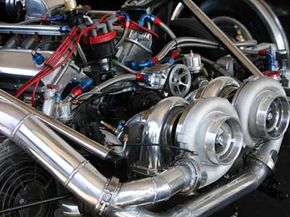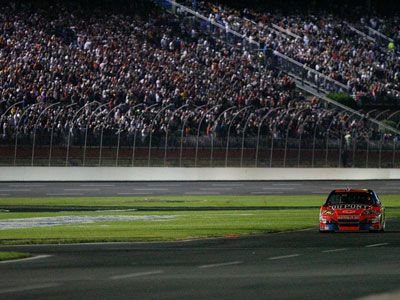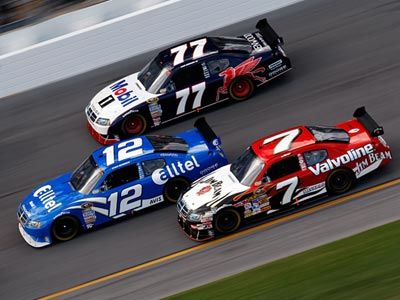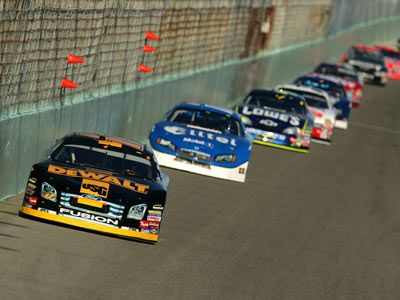If you think stock cars are fast, you should look at their onboard computers.
Telemetryis the remote collection and measurement of data. It usually involves some sort of wireless broadcast. Of course, remote data collection is important in many fields -- defense, medicine, even agriculture. But it's rarely more exciting than in stock car racing.
Advertisement
A stock car has a computer that collects and broadcasts the car's vital statistics to a central computer [source:NASCAR]. The broadcast uses a wireless radio -- so it's basically a souped-up PDA that automates messages from the driver.
What happens then depends on the purpose of the central computer. If it belongs to the pit crew, auto technicians coordinate the data with what the driver is telling them verbally about the feel and handling of the car. They can anticipate problems and accommodate changing track conditions. Clearly, information is power, which is why this use of telemetry is limited to vehicle tests. It's banned from NASCAR races.
Telemetry data also enhances the live broadcasts of auto racing events. For NASCAR broadcasts, up to eight radio receivers are installed at key points around the track to collect data from the speeding cars. Each receiver gets the car's wireless broadcast. Then, a central computer (usually, in the on-site TV production van) collects racing statistics five times a second -- from every car on the track [source:Afar].
That's how TV producers get what one producer calls "the most complicated graphic to produce in television" -- the virtual dashboard you see on the screen [source:Meserve]. It's also how NASCAR gets the information for its PitCommand service [source:NASCAR].
Advertisement






